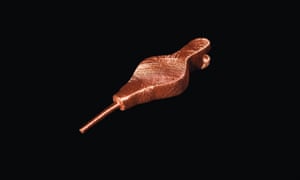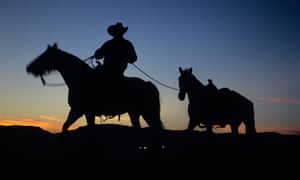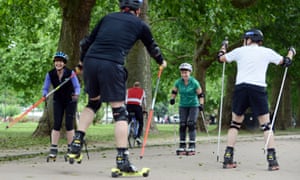Saturday 25 July 2015
15 weird risk factors for kidney stones
Anyone who's ever passed a kidney stone before has probably wondered how something so small (usually, anyway!) can cause so much pain. Unfair, we know. About 1 in 11 people will suffer from a kidney stone in their lifetime—and once you've already had one, you're about 50 percent more likely to have another. More bad news: At one time, stones primarily affected men, but new research shows that this gender gap has almost closed, possibly due to the rise in obesity.
Most kidney stones are a solid mass of minerals that have congealed and lodged itself somewhere in your urinary tract. The majority of them are made of calcium—usually a combination of calcium and oxalate, but, in rarer cases, calcium and phosphate—and, to a much lesser extent, uric acid.
Now for the good news: With a few dietary and lifestyle tweaks, you might be able to slash your odds of ever suffering from a kidney stone again—or, even better, prevent one entirely.READ MORE -http://www.foxnews.com/health/2015/07/25/15-weird-risk-factors-for-kidney-stones/
Sunday 19 July 2015
MOZZIE FESTIVE IN RUSSIA
IN RUSSIA A FESTIVAL MARKING MOSQUITO SEASON BEGINS SOON. COMPETITIONS INCLUDE TASTIEST GIRL WHERE ENTRANTS STAND NEXT TO A MOSSIE - INFESTED POND AND WHOEVER IS BITTEN THE MOST WINS.GIRLS WITH THE THINNEST PINS CAN WIN MOSQUITO LEGS CONTEST,THIS EVENT LASTS 3 DAYS IN BEREZNIKI.
Saturday 18 July 2015
Alice Anderson at the Wellcome Collection review – a weird, wired world
Wellcome Collection, London
From old TVs to obsolete telephones and even a staircase, Alice Anderson mummifies things in copper wire. It may sound banal – but it’s an art that gets some very curious and uncanny results
Bellows by Alice Anderson
Mystical and strange ... Bellows by Alice Anderson. Photograph: Wellcome Collection
Jonathan Jones
Friday 17 July 2015 15.09 BST Last modified on Saturday 18 July 2015 00.01 BST
Share on Facebook Share on Twitter Share via Email Share on Pinterest Share on LinkedIn Share on Google+
Shares
37
Their funeral wrappings glisten fierily in the spotlights that pick them out in a theatrically darkened space. All our yesterdays are here, the things we use and throw away, lost and found in spidery cocoons.
Alice Anderson wraps things in copper wire. It is a banal description of an art that gets some very curious and uncanny results.
Telephone, 2013, by Alice Anderson Facebook Twitter Pinterest
Telephone, 2013, by Alice Anderson. Photograph: Wellcome Collection
This might be in a museum a thousand years in the future, dedicated to the strange artefacts of the 21st century. Why, archaeologists will ask, did the people of that time choose to mummify their old TV screens, obsolete telephones and loudspeakers? Was it a bizarre religious attempt to apologise for the culture of waste that was at that moment eating up the planet?
An electric guitar has been swathed over and over again, the thin thread, wrapped tighter and tighter, entirely containing the instrument so you can see its shape but, up close, cannot make out its strings or fretboard. In caring for it, Anderson has muffled it. This guitar will never wail another solo. Nor will the pipe she has swaddled in copper wire ever again be smoked. This is not a pipe – it is a mummy. It is a ghost.
Anderson is hardly the first artist to have wrapped up everyday objects. Wrapping is in fact a great modern tradition. Anderson’s guitar recalls the shamanistic German sculptor Joseph Beuys who wrapped a grand piano in grey -READ MORE -http://www.theguardian.com/artanddesign/2015/jul/17/alice-anderson-at-the-wellcome-collection-review

Saturday 11 July 2015
We Need More Weird Shows, Even If They’re Not That Great
ICF's oddball Spoils of Babylon didn't seem particularly ripe for a sequel when it aired last year, but here we are: The Spoils Before Dying, a six-episode miniseries, finishes up tonight. It's overwhelmingly ridiculous, but joyfully so. I would have called it the strangest comedy of the week by a long shot — until I saw 7 Days in Hell, HBO's tennis mockumentary starring Andy Samberg. Now that's a weird comedy.
Both, in fact, are very odd, reveling in hyperspecific nonsense, style parodies, appearances by Michael Sheen and a variety of SNL alumni, and a sense that these projects are probably funnier in idea than in execution. What's the polite term for "vanity project"?
Spoils Before Dying is about a jazz musician (Michael Kenneth Williams), his boozy paramour (Kristin Wiig), and his ghost ex (Maya Rudolph). Explaining the plot overemphasizes its significance; mostly it's a lot of silly names and loopy characters. Hell is a faux documentary about a seven-day tennis match between a washed-up Aaron Williams (Andy Samberg, the white adopted brother of the Williams sisters), and a British dope (Kit Harington). Think 30 for 30, but more about its bizarre asides than its subject. Both programs have their virtues, and plenty of very funny pieces, but I'm guessing both were more enjoyable to make than they are to watch.
And yet there's something endearing about both endeavors. Maybe it's their willingness to take premises far, far past logical extremes — how exactly did we get from tennis to a computer-animated news reenactment of Samberg's naked character running from a Swedish prison, with a four-READ MORE -http://www.vulture.com/2015/07/we-need-more-weird-tv-shows.html
Weird westerns that cross the genre border
 It’s a little-known fact that one of the all-time bestselling writers of westerns lived most of his life in the English market town of Melton Mowbray. JT Edson, who died in 2014, wrote more than 137 novels, most of them westerns, and claimed in all seriousness “never to have even been on a horse”. A former chip shop owner, Edson developed a love of escapist fantasy in his youth, and approached writing westerns just as he later approached writing sci-fi.
The world of the western is about as historically accurate about 19th-century America as the world of the Shire in Lord of the Rings is about pre-industrial England. Both are fantasy worlds, abstracted from reality, crafted by expert fantasists. The pre-eminent western author, Louis L’Amour, loved the mythology so deeply that he began to write novels as a way of escaping into it. Like sci-fi and fantasy authors, writers of westerns, even when their sales stretch into millions, remain at the margins of mainstream culture. So it seems almost inevitable that over time the western and the fantasy have cross-bred.
Stephen King, the master of rejuvenating pulp plotlines for today’s reader, can make a strong claim to owning the weird western as well. The Dark Tower series, which now stands at eight volumes, is the story of gunslinger Roland Deschain -READ MORE -http://www.theguardian.com/books/booksblog/2015/jul/10/weird-westerns-genre-border-fantasy
It’s a little-known fact that one of the all-time bestselling writers of westerns lived most of his life in the English market town of Melton Mowbray. JT Edson, who died in 2014, wrote more than 137 novels, most of them westerns, and claimed in all seriousness “never to have even been on a horse”. A former chip shop owner, Edson developed a love of escapist fantasy in his youth, and approached writing westerns just as he later approached writing sci-fi.
The world of the western is about as historically accurate about 19th-century America as the world of the Shire in Lord of the Rings is about pre-industrial England. Both are fantasy worlds, abstracted from reality, crafted by expert fantasists. The pre-eminent western author, Louis L’Amour, loved the mythology so deeply that he began to write novels as a way of escaping into it. Like sci-fi and fantasy authors, writers of westerns, even when their sales stretch into millions, remain at the margins of mainstream culture. So it seems almost inevitable that over time the western and the fantasy have cross-bred.
Stephen King, the master of rejuvenating pulp plotlines for today’s reader, can make a strong claim to owning the weird western as well. The Dark Tower series, which now stands at eight volumes, is the story of gunslinger Roland Deschain -READ MORE -http://www.theguardian.com/books/booksblog/2015/jul/10/weird-westerns-genre-border-fantasy
Eight weird urban sports to try this summer
Rollerskiing
The last time I went cross-country skiing, it was along the snowy trails of St Moritz, skirting a frozen lake. Now I can say I’ve been skiing on flat tarmac in a London park. In June. Needless to say, there was no snow.
I was rollerskiing – an alternative to cross-country skiing that began as a summer training technique in the 1950s, and is now a thriving sport in its own right. It involves short skis, about half a metre long with a small wheel at each end, plus ski poles. The experts at the London Cross-Country Ski Club recommend that beginners have five lessons to build confidence, technique and stamina. I was trying to master the basics in a two-hour crash course – hopefully without too much crashing involved.
Falling over on skis is never fun, but at least on snow you have a relatively soft landing. Tarmac, on the other hand, hurts. This made me tense, wobbly and slow; while the other two beginners in my class immediately zoomed off, I barely moved. On the plus side, I had plenty of time to concentrate on the correct technique.
We shuffled about on grass to get the feel of the skis, then moved on to a path to practise “double poling” (keeping the skis parallel and using the poles to propel yourself along), “skating” (going from side to side, like ice-skating) and “classic” (a smooth forwards stride). Having watched Alison, my instructor, fly along skater-style with the grace of a gazelle, I could certainly see why the more -READ MORE -http://www.theguardian.com/lifeandstyle/2015/jul/11/urban-weird-sports-summer-rollerskiing

Saturday 4 July 2015
See the weird, trippy results of Google's DeepDream experiment
Google has been showing off the results of an artificial intelligence experiment, where photos were interpreted and edited by what the firm calls its ‘neutral network’.
It uses software called DeepDream, which has been coded to recognise faces and other patterns in images. Once it thinks it has identified a pattern, the software edits the image slightly to make it look more like that pattern, and then repeats the process across the rest of the image.
The results, as Google showed, turned run-of-the-mill photos into strange dream-like scenery and panoramas – mostly because where the software thought it had found a pattern – such as a face or building – it had morphed a scene to look like the pattern.
Trees became dogs, and landscapes had sci-fi towns and villages added to them. It all got very weird, very quickly.READ MORE -http://home.bt.com/tech-gadgets/tech-news/see-the-weird-trippy-results-of-googles-deepdream-experiment-11363990198995

Subscribe to:
Posts (Atom)